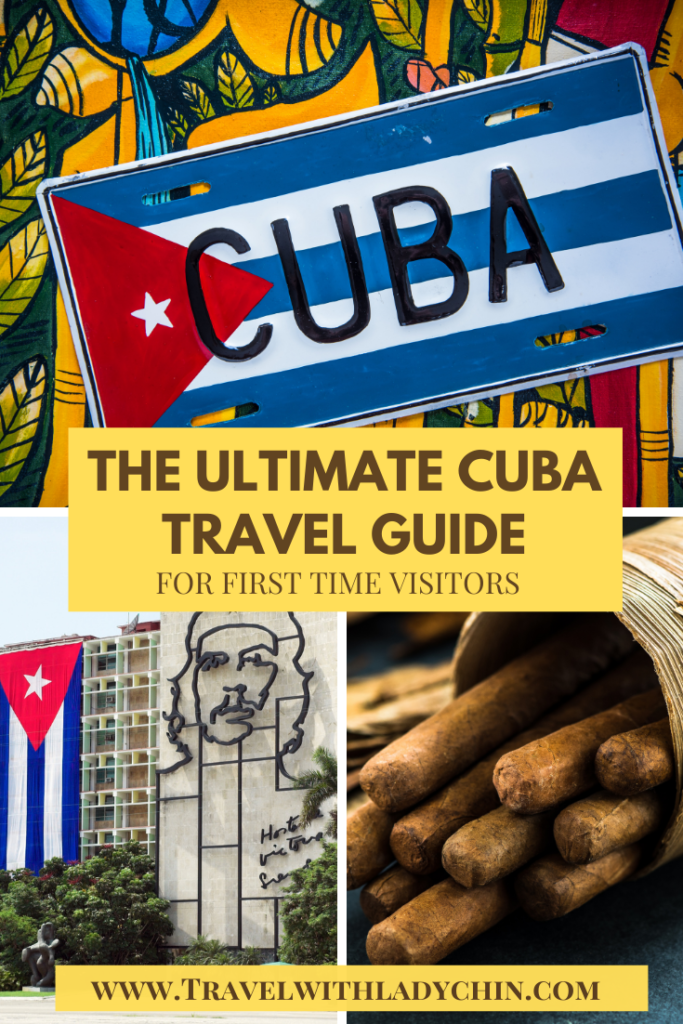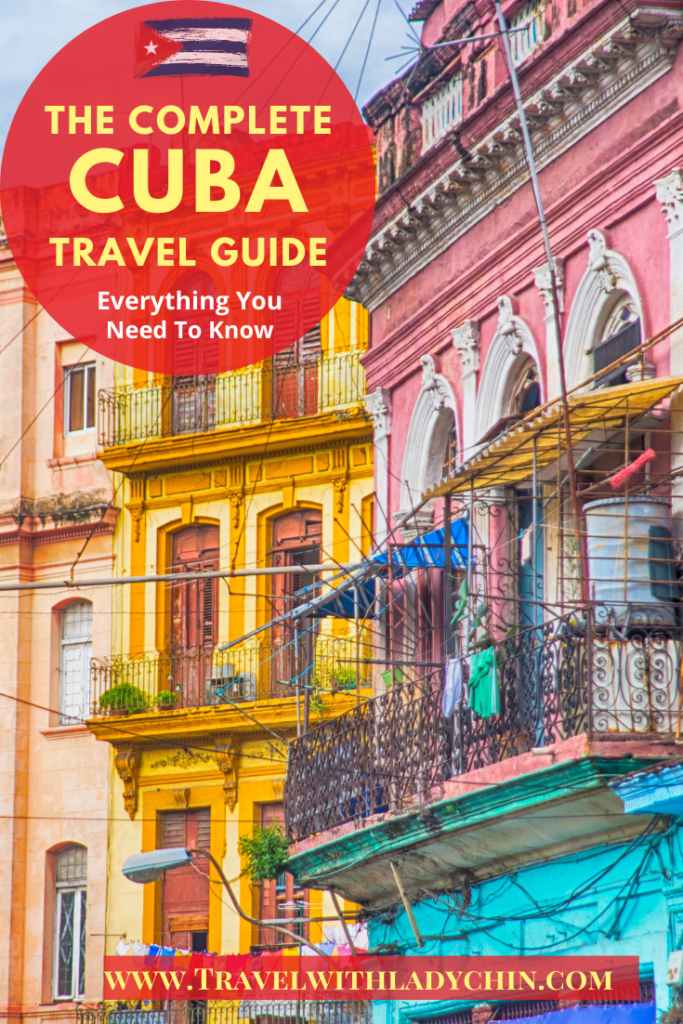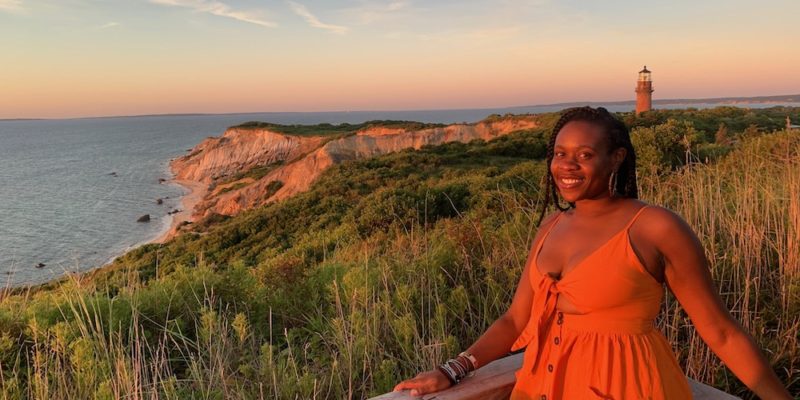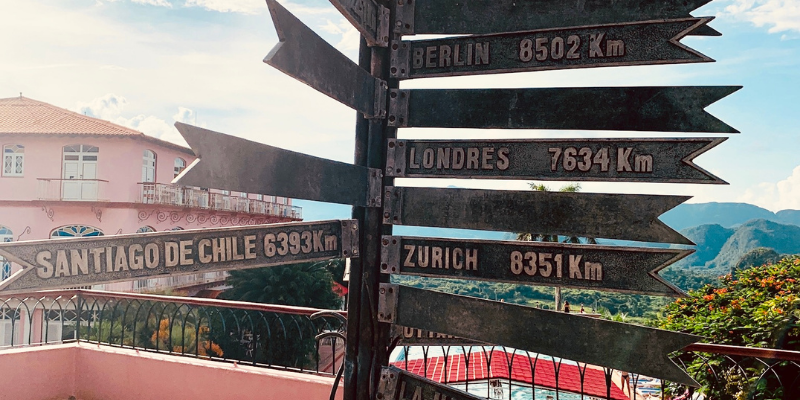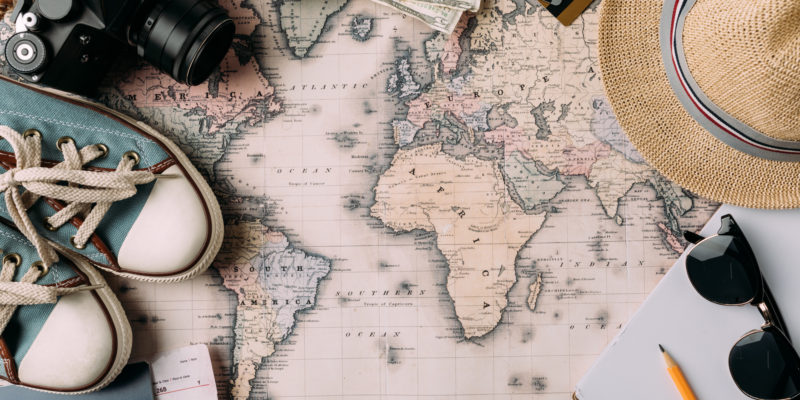Last Updated on September 20, 2023 by Lady Chin
The first time I heard ‘La Vida Es Un Carnival’ by Celia Cruz, I fell in love with Cuba and the idea of one day visiting. I would daydream about going to the one country U.S citizens were restricted from traveling to because of the trade embargo.
That changed in 2016 when the Obama Administration loosened restrictions, allowing Americans to travel legally to Cuba.
Pin Me for Later!
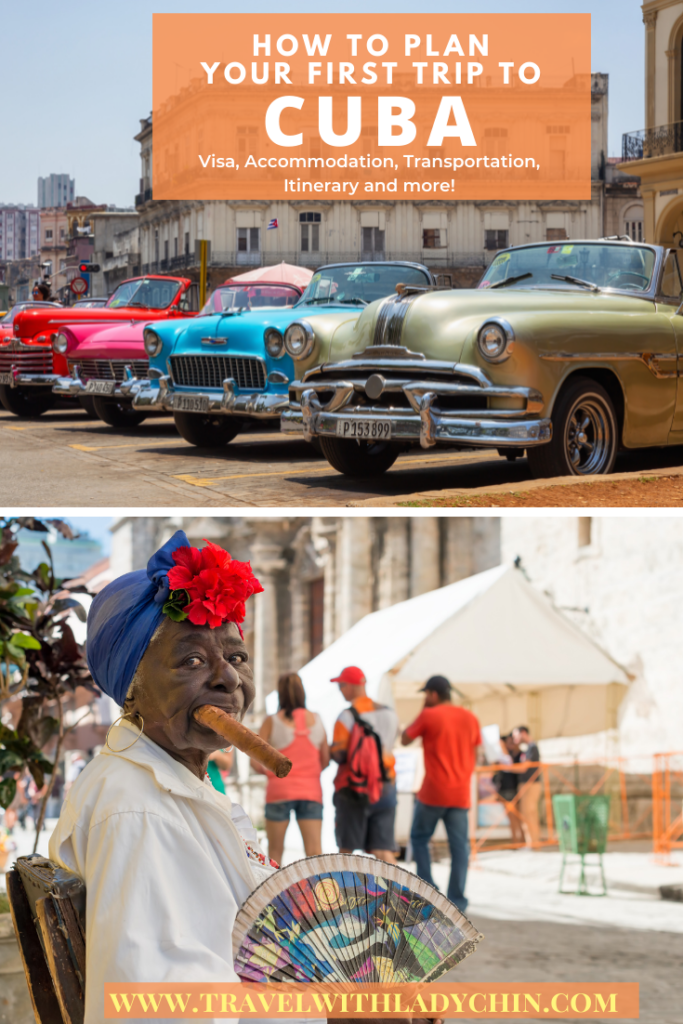
The Trump administration reversed many of the restrictions, making it more challenging to visit Cuba. In fact, American cruises to Cuba halted completely.
Despite the reversal of the sanctions on Cuba, I’ve managed to visit four times in the last four years. I admit the first time I visited Cuba, I was totally unprepared and made many mistakes.
Looking back, those mistakes are laughable, but recognizing mistakes creates learning opportunities.
Are you visiting Cuba for the first time? Not sure what you need to know before going? No worries, I’ve put together this Cuba travel guide for first-time visitors to help you have the most enjoyable experience!
THIS POST CONTAINS AFFILIATE LINKS, AS EXPLAINED IN MY DISCLOSURE POLICY.
This is the first post in the Cuba series. Here’s the complete 10-part series:
Cuba Travel Series
Travel Guide: The Complete Travel Guide For First-Time Visitors
Money Honey: Cuban Currency Guide: Everything You Need To Know
For The Culture: 36 Ways To Immerse Yourself in Afro-Cuban Culture
The Ultimate Cuba Bucket List: 101 Fun Things to Do in Cuba
Cuba Bucket List: Top 10 Epic Things To Do in Cuba
Packing Tips: The Complete Guide To Packing For Your Trip To Cuba
Inspiration: 30 Photos That Will Inspire You To Visit Cuba
Travel Tips: 10 Things You Should Know Before Visiting Cuba
Trinidad: How To Explore Trinidad in 3 Days
Viñales: How To Take the Perfect Day Trip From Havana To Viñales
The Ultimate Cuba Travel Guide For First-Time Visitors
What to expect
Cuba is an island located in the Caribbean, less than 100 miles from the United States. The flight is about three hours from New York City or other east coast cities.
Cuba is unlike any place you will visit. The energy and vibes in Cuba are simply magical!
Between the Spanish-colonial architecture, its mix of African and Spanish roots, contagious rhythms of salsa music blasting on every corner, and the 1950s classic cars whizzing by you, you will feel like you stepped into a time capsule.
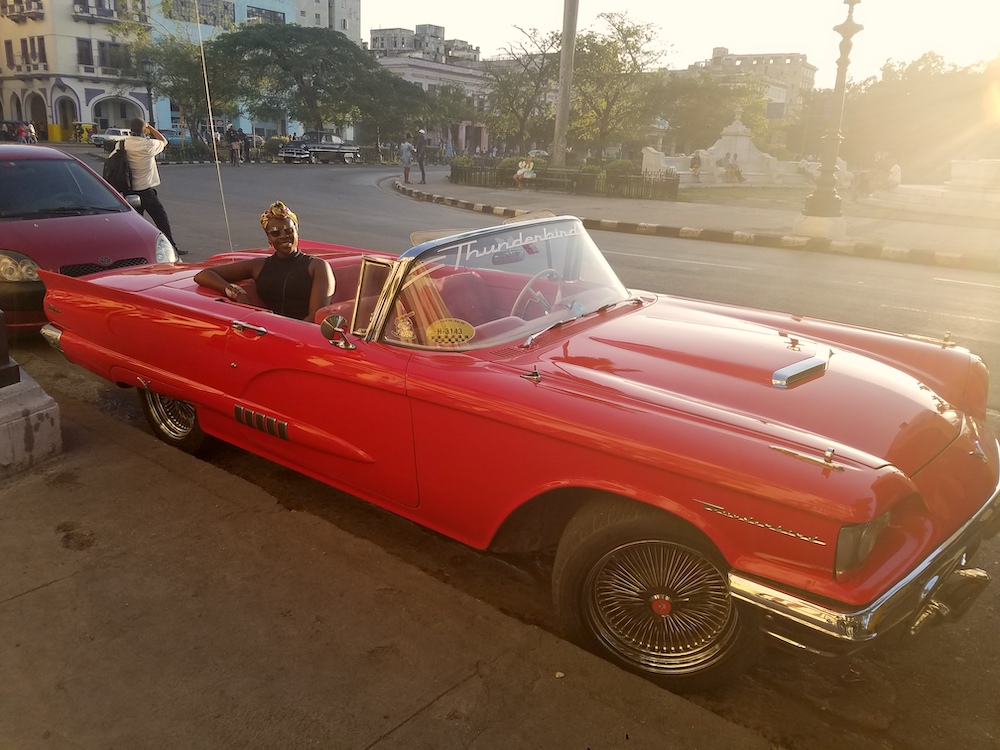
Language
Spanish is the official language of Cuba. Not everyone speaks English, so it’s helpful to know a few important Spanish phrases or travel with someone who can translate.
I speak from personal experience; being the translator can sometimes be overwhelming. To get familiar with the basics, I suggest Google translate or Duolingo. I even found Duo Lingo especially helpful any time I would forget a word.
Currency
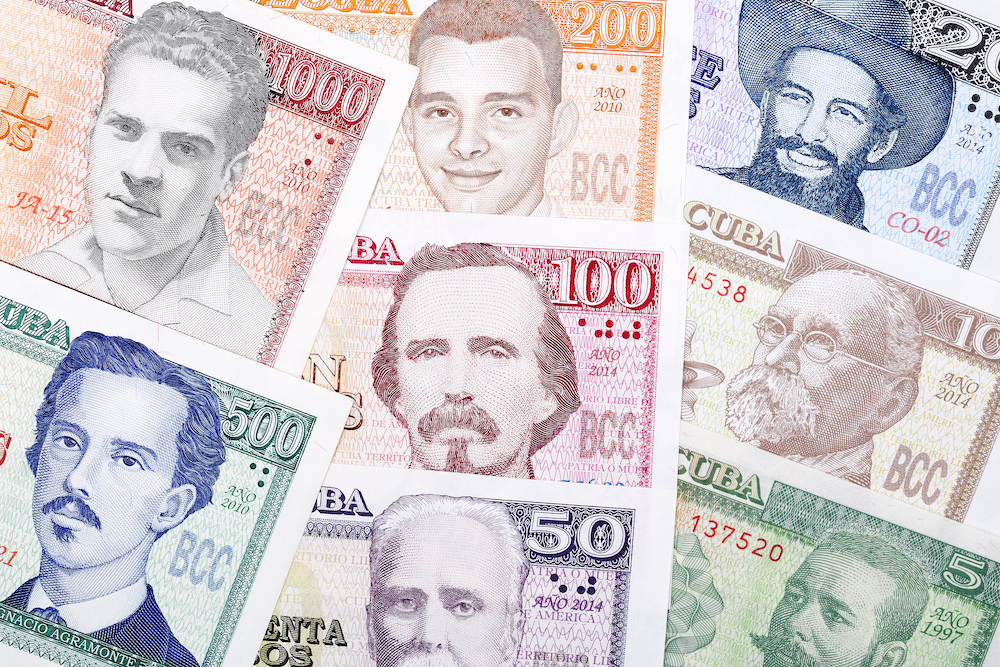
Until December 2020, Cuba had two currencies: the CUP (Cuban Peso) and CUC (Cuban Convertible Peso). CUP was reserved for Cuban residents, and CUC was primarily used by tourists.
That all changed in January 2021 when the CUC was discontinued leaving just the CUP as the official Cuban currency.
While CUC is no longer accepted in Cuba, you may see some CUC still in circulation until mid- 2021. Cuban residents have until July 2021 to exchange their remaining CUCs for CUP.
Credit cards & ATMs
U.S. credit cards are not accepted in Cuba and won’t work. That also means you can’t take out money from the ATMs. Don’t even waste your time trying. I tried, and well, I played myself.
However, if you’re traveling from Canada, Europe, or someplace else, you will be able to use your credit card and take money out of ATMs. Remember that every credit card payment or cash withdrawal will result in fees that add up over time.
Plugs
Plugs and sockets are of type A, B., C, and L. The standard voltage is 110/220 V, and the average frequency is 60Hz. The plugs are the same for U.S. travelers, and there is no need to bring a converter. If you’re visiting from another country, I recommend buying a reliable adaptor.
Safety
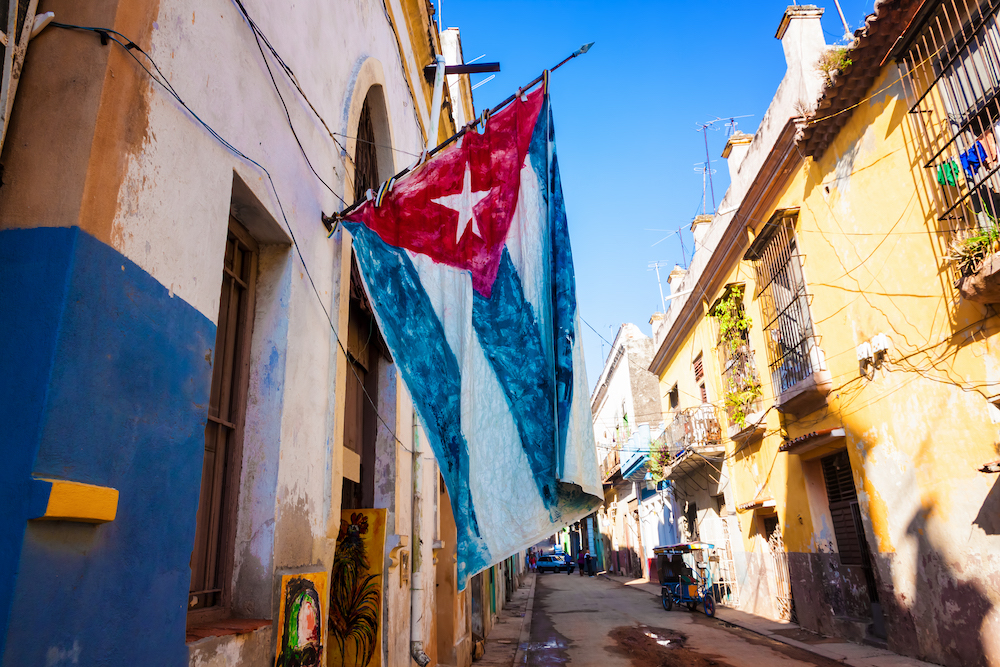
Overall, Cuba is safe, as punishment for petty crimes can be severe. Not to mention, citizens are not allowed to own guns, and violent outbreaks are not common.
I’ve felt safer traveling around Cuba, even solo, than I do living in the United States. While Cuba is generally a safe place to visit, it’s still important to practice common-sense safety tips.
I suggest remaining alert to your belongings and surroundings as if you would in your home country.
Here are additional safety tips to keep in mind:
- Do not flash your expensive jewelry or fancy smartphones. It’s best not to bring extra attention to yourself! Dress modestly and leave your fancy or irreplaceable items at home.
2. Do not take pictures of the military or police! Taking photos of the military and the police is a big no-no and not to mention illegal. You risk being accused of espionage if you get caught snapping pictures of civil servants. Again, I wouldn’t recommend it.
3. Do not take taxis without a license. Stick to taking yellow Cubataxi, yellow and black Ladas, modern Toyotas, and old American cars. Listen, anyone can pose as a taxi driver, and it’s best to avoid being scammed or putting yourself in danger.
4. Do not drink water from the tap. Due to poor sanitation, old pipes, pollution, and even human waste are contributing factors that impact water quality. I recommend sticking to drinking bottled water. Avoid ordering mixed drinks containing ice made from tap water. I brushed my teeth with bottled water while in Cuba.
5. Do not stay at non-authorized Casa Particulares. Visitors are prohibited from staying in casas particulars with an orange sign and only meant for Cuban citizens. If you’re planning on staying at a casa particular, a private home, make sure to look for the blue sign outside the house. If caught staying at the wrong place, you and the homeowner can get in trouble.
6. Do not consume drugs. In Cuba, purchasing and consuming drugs is illegal. If caught, you risk going to maximum-security prison!
7. Do not get drunk alone. Getting completely drunk alone in a foreign country isn’t ever a good idea, and Cuba is no different. You want to remain vigilant of your surroundings at all times.
8. Prepare for blackouts. Blackouts tend to happen in Cuba from time to time, even in resorts with generators. Be prepared and pack a small flashlight with you, just in case.
9. Do not talk about politics. Despite recent reforms, Cuba is a communist country, and the government does not tolerate criticism of any kind. Avoid talking about politics altogether, as you risk making people feel uncomfortable and potentially being reported to the police for disrupting the order in the country.
10. Do not publicly blow your nose or spit in the street. Culturally, Cubans find blowing your nose and spitting in public incredibly rude. If you need to, go somewhere private and handle your business.
Getting to Cuba
Cuba has 16 airports around the island. José Martí international airport in Havana is the most popular airport and the only airport U.S. flights can land. Holguín, Santa Clara, and Camagüey are other popular airports.
Approved travel categories for U.S. citizens
All U.S citizens visiting Cuba are required to select a reason for their visit, known as a travel category.
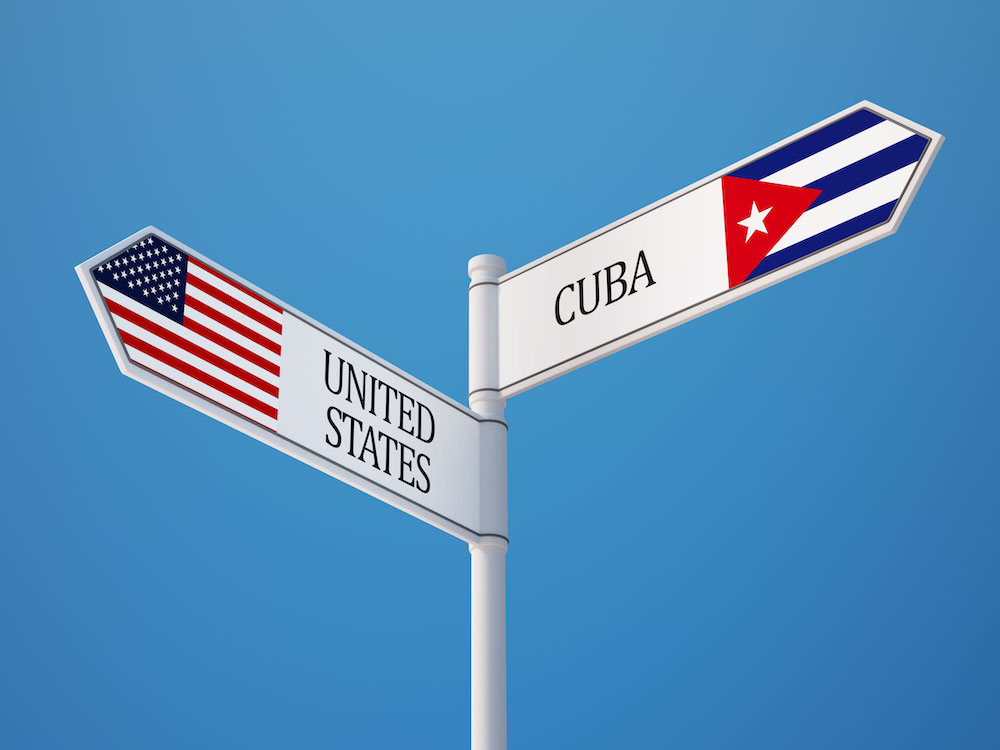
12 current categories of approved U.S. travel to Cuba include:
- Family travel
- Official government business
- Journalist activity
- Professional research and meetings
- Educational activities
- Religious activities
- Public performances, clinics, workshops, exhibitions, and athletic competitions
- Support for the Cuban people
- Humanitarian projects
- Activities of private foundations or research for education institutes
- Exportation, importation, or transmission of information or informational materials
- Export
According to the New York Times, U.S citizens can visit Cuba under the “support of the Cuba people” travel category independently or with a tour. Supporting the Cuban people means spending money at Cuban-owned businesses such as casa particulares or paladares, family-owned restaurants.
Cuba tourist visa
Tourist visas are required to enter the country. For U.S. travelers, air carriers including American, Delta, JetBlue, Southwest, and United have visas available for sale in the boarding area at a price ranging from $50-$100. It’s also legal to fly through another country like Canada or Mexico. You can also get a visa at the airport.
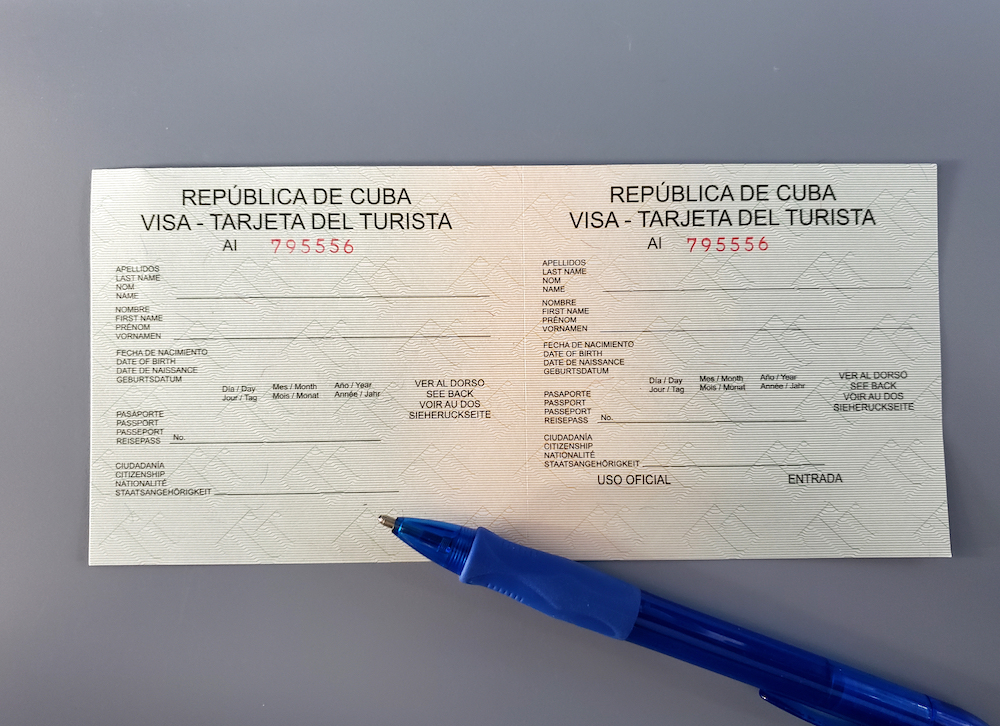
Medical insurance
All travelers to Cuba are required to have travel medical insurance. Travel medical insurance must include medical evacuation, emergencies, and repatriation coverage. U.S. airlines include the mandatory level of travel medical insurance with your ticket purchase. Visitors can buy additional coverage at their own discretion.
Best time to visit
Cuba has tropical weather, which makes visiting the island year-round possible. There are two seasons: dry and wet. The dry season is from December-May, inviting visitors looking to escape the cold weather. The wet season is from June to November. Hurricane season is from August-October.
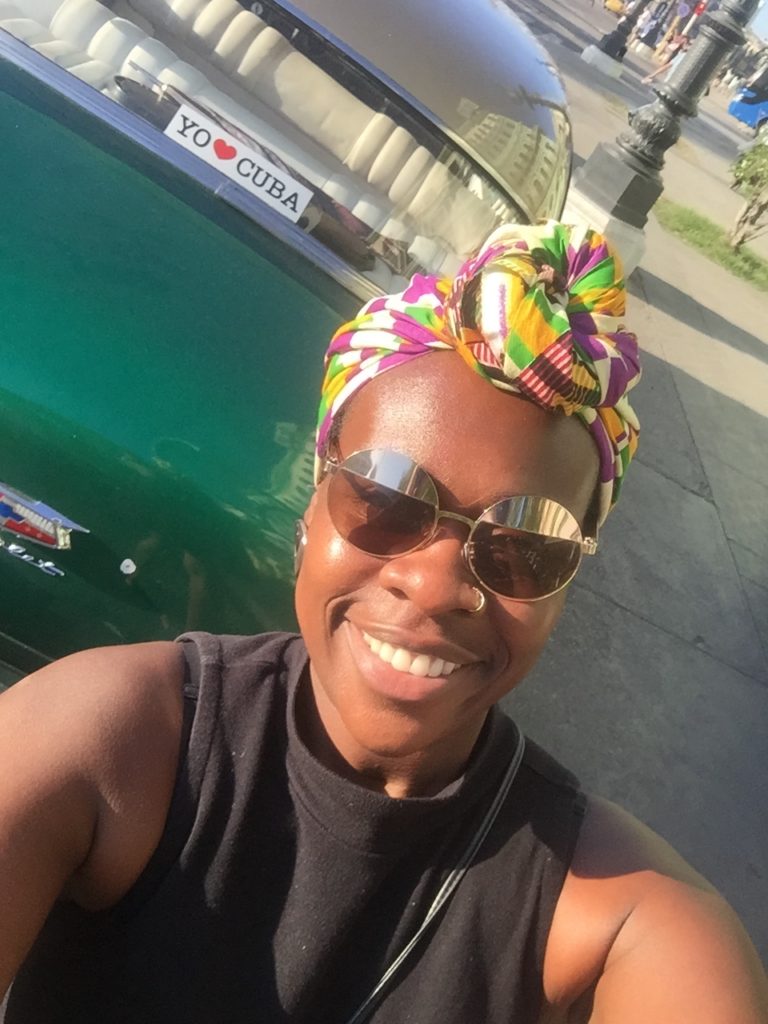
The second time I visited Cuba was during the month of August, and we experienced a few spells of heavy rain, although it didn’t last long. If you’re not willing to risk visiting Cuba and experiencing unpredictable weather, I would recommend visiting during the dry season.
Note: More tourists visit Cuba during the dry season, so be prepared for crowds.
Population and ethnic groups
Cuba is home to over 11 million people, making it the second-most populous Caribbean island after Haiti. I loved the diversity of the island. The breakdown of the ethnic groups is 64 percent white, 25 percent mestizos, and ten percent Afro-Cuban.
Afro-Cubans are descendants of West Africa brought to Cuba by the Spanish during the transatlantic slave trade. Santiago de Cuba is on the opposite side of the island and is the second-largest city after Havana, with rich African history. Santiago de Cuba is a must-visit city if you plan on visiting for longer than one week.
Accommodations in Cuba
If you’re looking to get an authentic Cuban experience, I highly recommend staying at a casa particular. Casa particulars are private rooms or entire homes that Cubans residents rent out. What I loved most about staying at a casas particular is that you don’t have to book them in advance.
For those who are more go-with-the-flow type, vacant casa particulares have signs hanging in front of the houses. The price ranges anywhere from $10-$30 per person. I’ve also booked my casa particular through Airbnb, and usually opt for renting out an entire apartment.
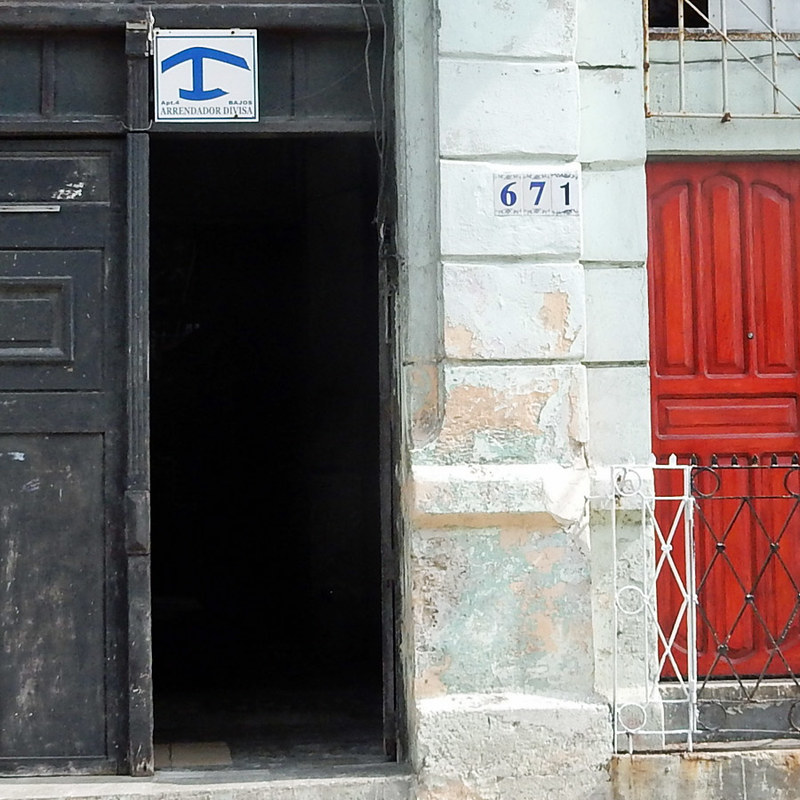
Alternatively, you can stay in a hotel but be prepared to pay between $100-$400 per night. I don’t know about you, but staying one night in a hotel would blow my entire budget. Also, I should mention that American visitors are prohibited from staying in government-controlled hotels.
Transportation
Bus
Getting around and navigating in Cuba can be tricky, especially when your time and budget are limited. Most tourists opt to explore the island by bus. Roundtrip tickets can be purchased online at Viazul or Cubacon, the most popular bus service on the island. I found them to be the most affordable.
I recommend buying roundtrip bus tickets in advance, and if you do, remember to take a screenshot of your reservation; cell phone service may not be available.
If you decide last minute that you want to visit Trinidad de Cuba, Viñales, or another part of the island, you can purchase bus tickets from most hotels as there’s a good chance other tourists are heading that way. I bought my bus tickets to Trinidad at Hotel Meliá Cohiba in Vedado.
Renting a car
Renting a car is another excellent way to explore the island easily and flexibly if you have the time. Especially if you are the adventurous type!
The average car rental is $85 per day, not including gas, insurance, and hire fees. However, once you add everything up, it can be quite expensive. Rental cars can be picked up at the José Martí international airport in Havana. Your home license will be sufficient enough for you to rent and drive in Cuba.
If you’re interested in renting a car, make sure to book your reservation weeks or months in advance. Booking a rental ahead of time will save you a lot of headaches, as there’s a good chance you will not be able to get a car without a reservation.
The blog, Why Not Cuba, goes into great detail about how to rent a car in Cuba, including the advantages and disadvantages.
Hire a driver
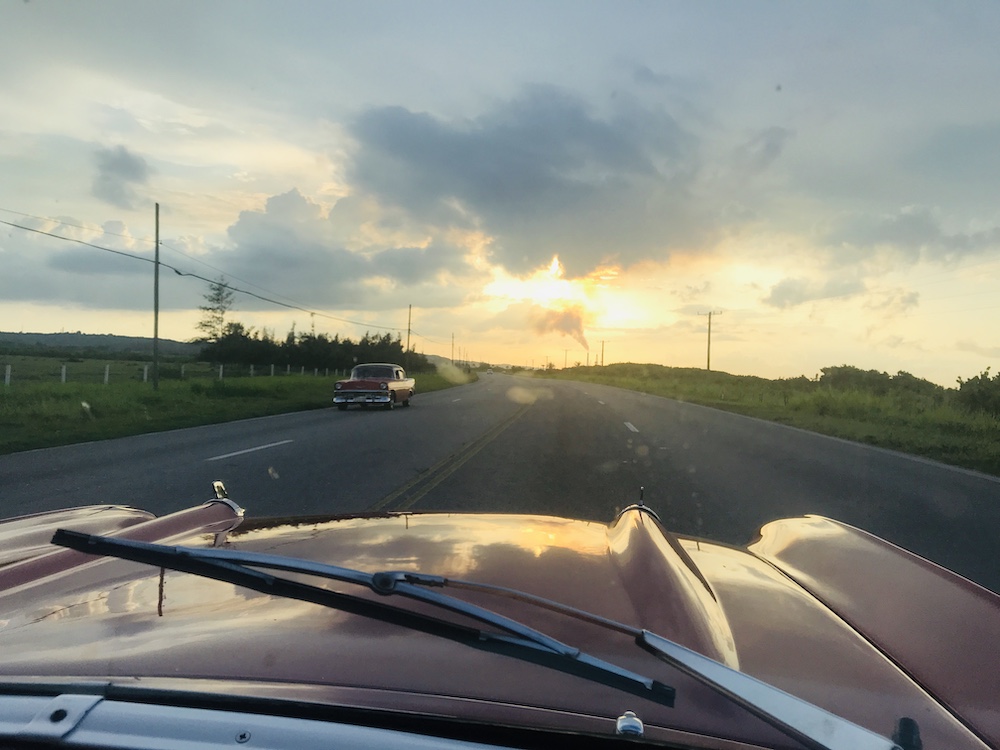
Hiring a car is a good idea if you’re traveling with multiple people who can split the cost. Our Airbnb host offered chauffeur service, making exploring Havana, Viñales, and Varadero much more manageable than if we were to do it on our own.
A bonus for having a driver from the area made it possible for us to get the inside scoop on the information you wouldn’t get from any tour guide. Be sure to ask your host if they offer such services, and if not, chances are they know someone who does.
Taxi colectivos
Taxi colectivos are shared rides for people heading towards the same area. You can catch a taxi colectivo by waving it down or standing near a bus stop as the car passes by. Rides typically cost $2-$3, depending on where you’re going.
Prices are cheaper if you’re traveling with Cuban people and let them do the talking. If you talk, the driver will know you’re not from there and will charge you the prices for out-of-towners.
Offline maps
Before arriving in Cuba, I suggest downloading Maps.me or Galileo maps. Both apps are available without an internet connection.
Internet
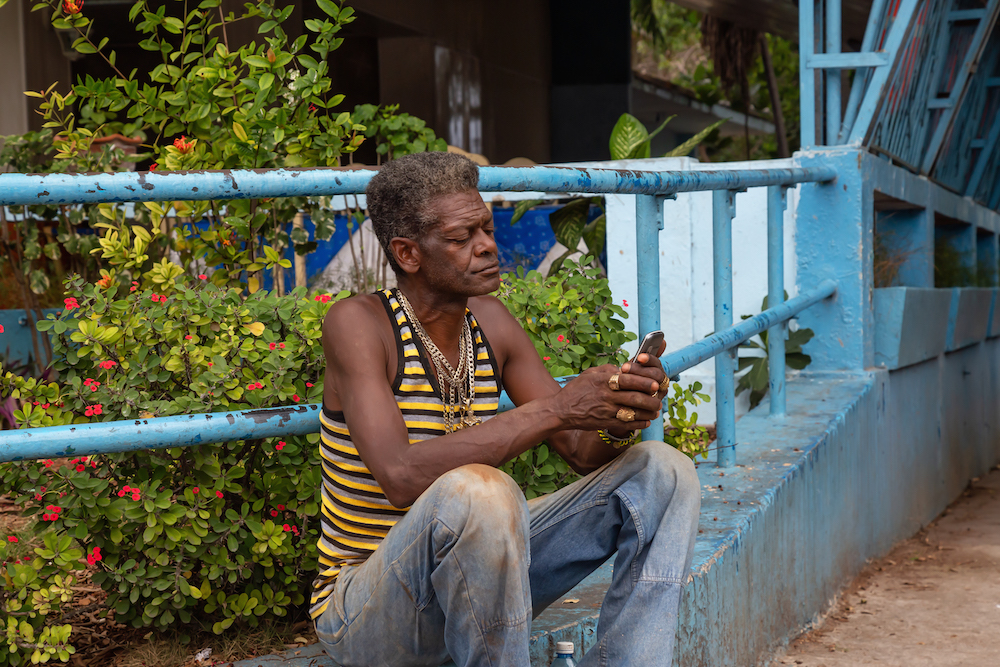
Free internet or wifi access is limited in Cuba. Wifi is available at hotels, resorts, and public wi-fi spots. Internet cards for 30 minutes and 1 hour are available for sale at hotels, resorts, and the airport.
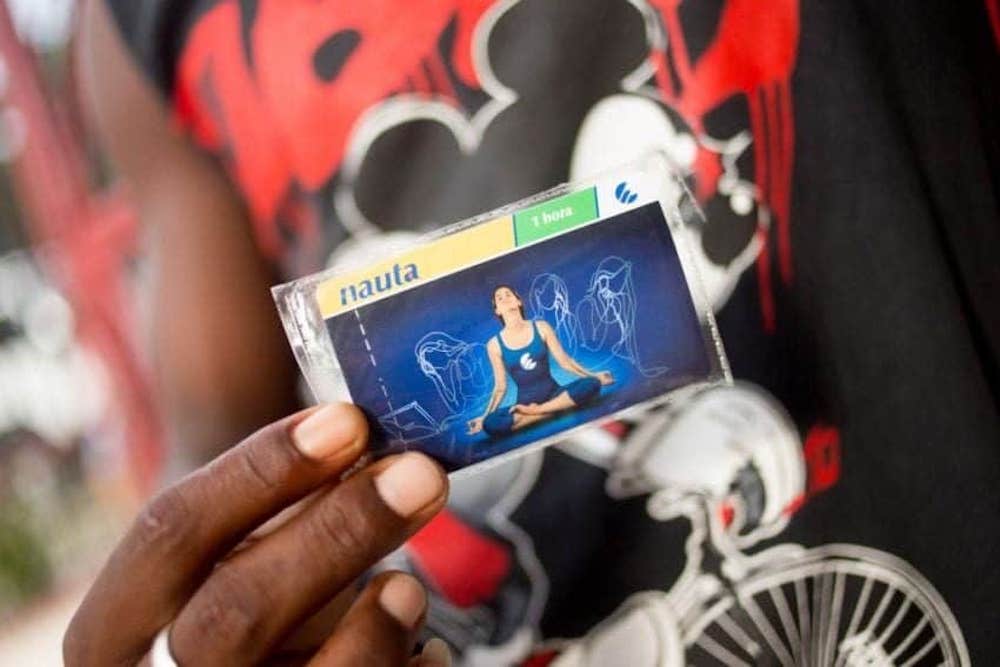
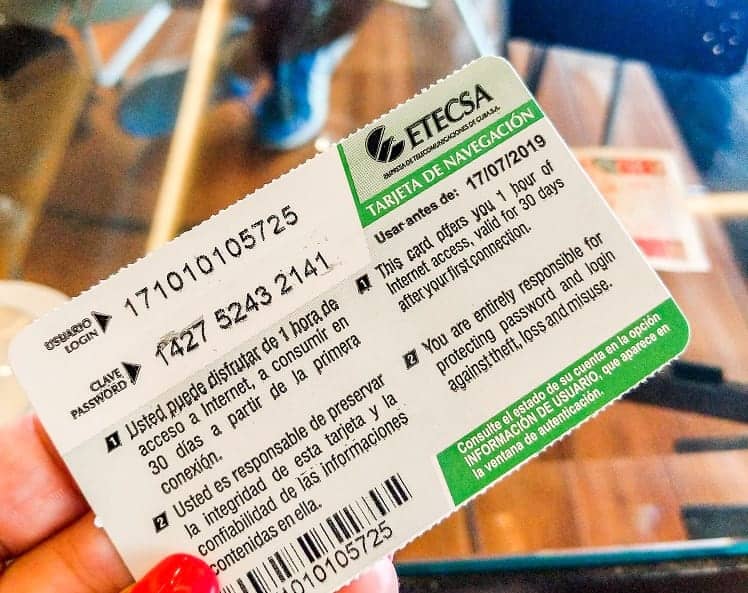
Tip: Before you leave the airport, buy a few internet cards. They are cheaper than the ones at hotels and resorts.
Initially, I thought I would go crazy without having the internet for a week, but I found that disconnecting allowed me to be fully present in Cuba. There wasn’t a need to be on my phone aimlessly scrolling, and I couldn’t even do that if I wanted to. I’m here to remind you to embrace the lack of connectivity and to unplug! You don’t realize how dependent you are on the internet until it’s unavailable.
Cuban cuisine
The food supply in Cuba tends to fluctuate due to the economic situation, which means hotels and restaurants can run out of menu items. Typical Cuban food can be hit or miss, in my opinion.
I thought the food would have been more flavorful but found, at times, it was bland and lacked certain spices and ingredients. This is in part due to the US embargo but also the fact that Cubans are not very adventurous when it comes to experimenting with different ingredients.
However, I was pleasantly surprised to learn most of the produce is grown locally. There is minimal factory farming in Cuba, and the food is not pumped full of hormones and artificial fertilizers.
Popular Cuban food or dishes to try:
- Ropa vieja- shredded beef (or lamb) served as a kind of stew, prepared over slow heat with green peppers, tomatoes, onions, and garlic.
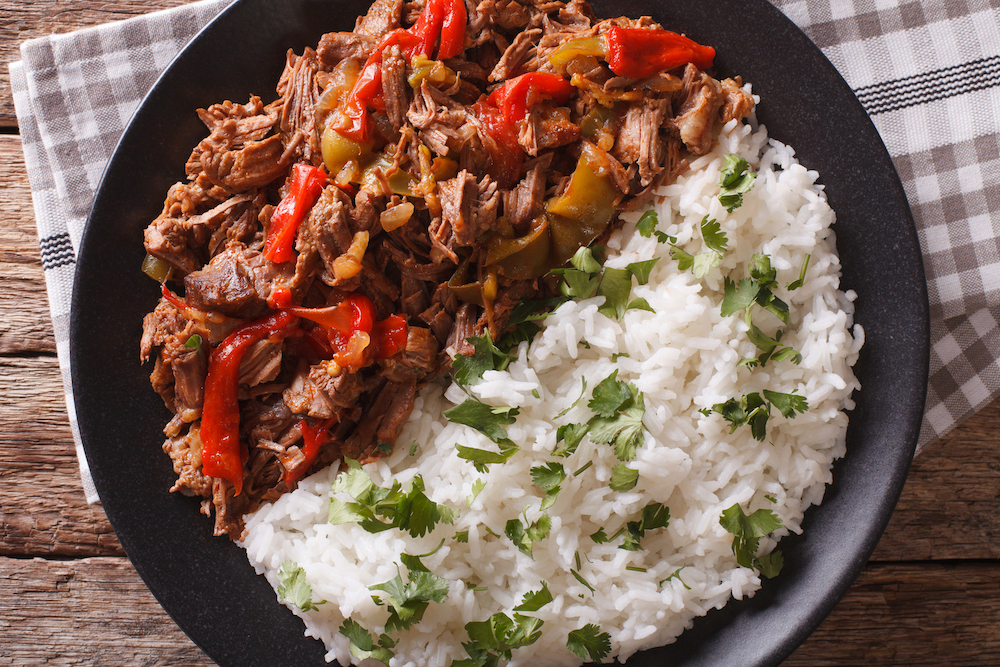
2. Comida Criolla – roast or fried pork and chicken accompanied by rice, beans, and viandas (root vegetables).
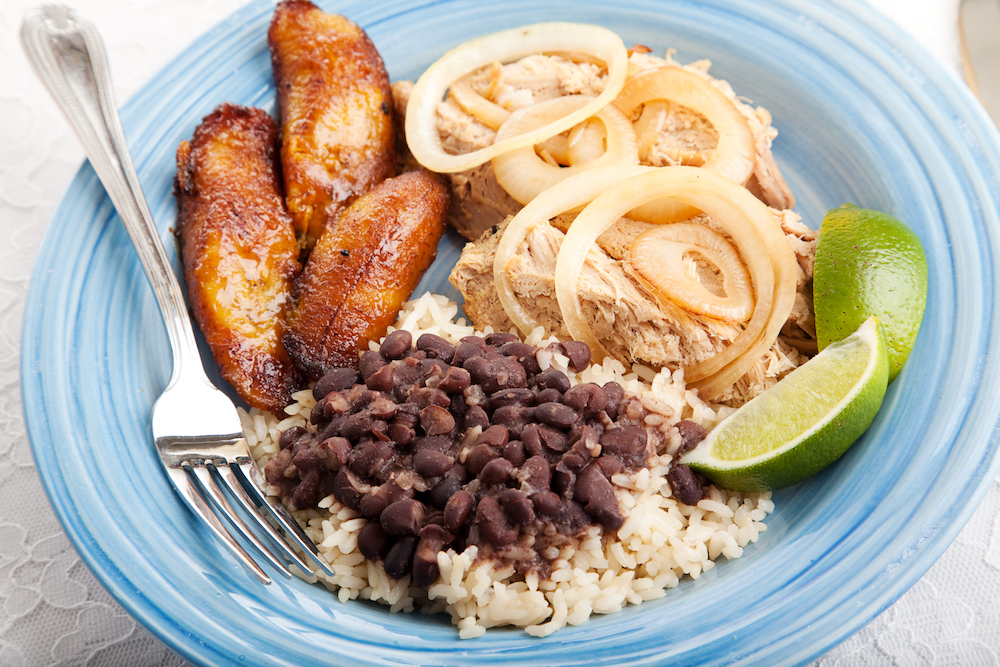
3. Ajiaco – a rich stew. Ingredients vary according to region but always include at least one kind of meat, corn, and usually some green vegetables.
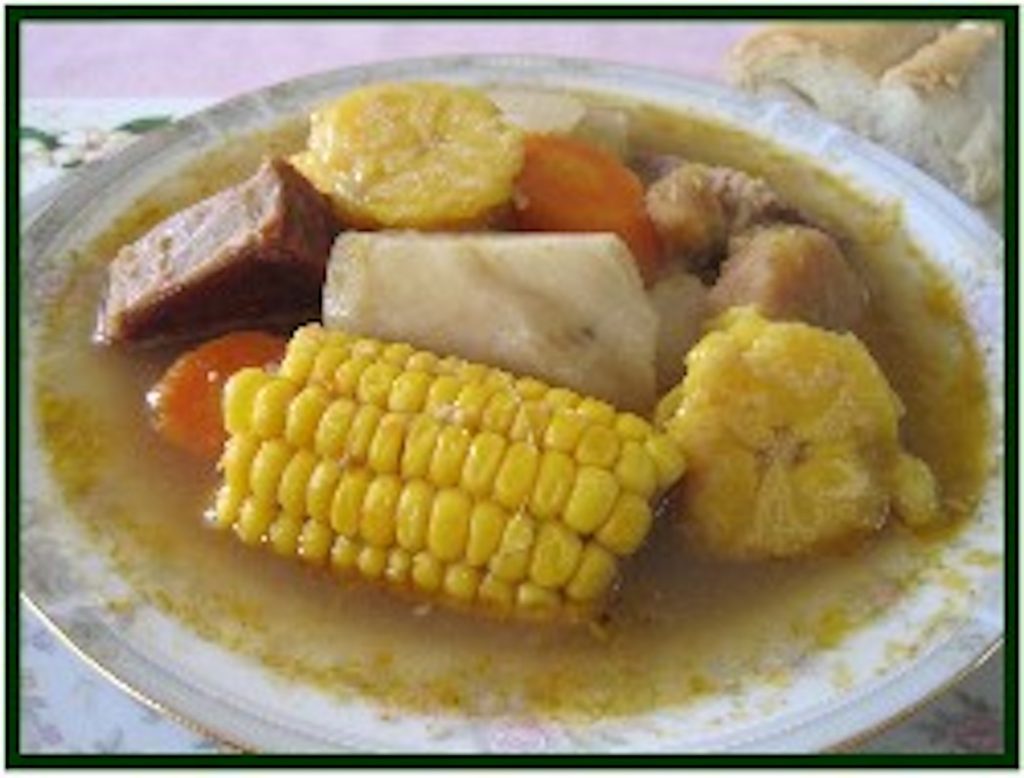
4. Lechón or suckling pig – a delicacy commonly marinated in garlic, onions, and herbs cooked over a spit- or oven-roasted.
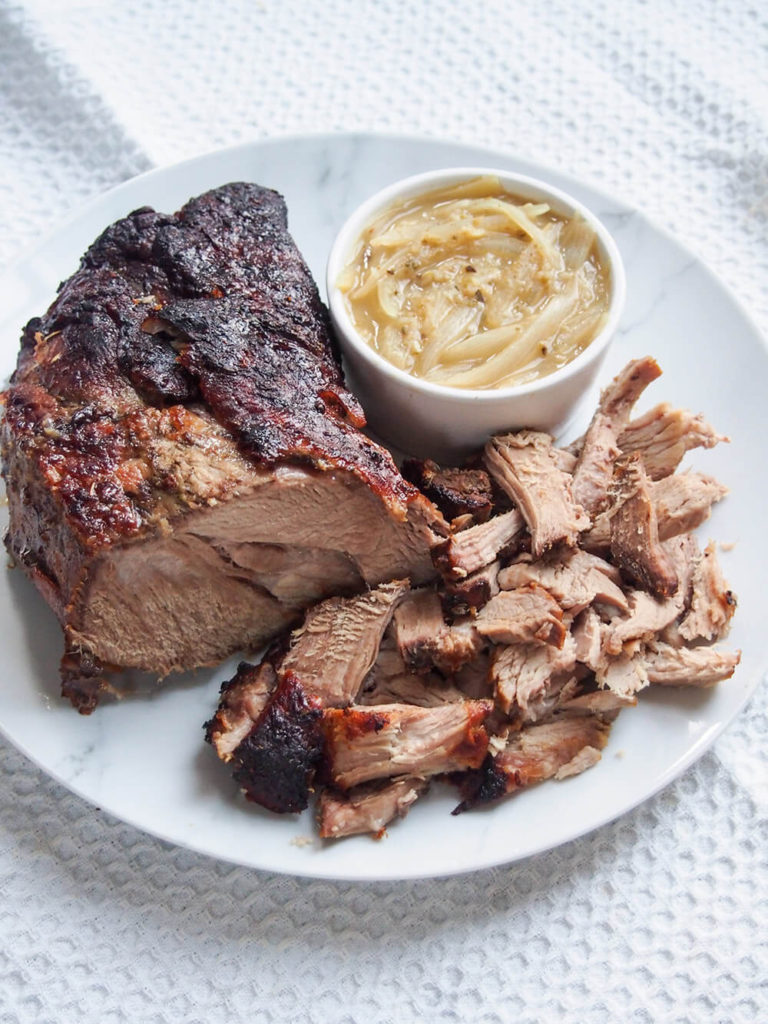
5. Meat and seafood enchilado – cooked in a tomato and garlic sauce with mild chili.
6. Seafood such as lobster, shrimp, octopus, and fish are always a good choice and are extremely fresh.
Traditional Cuban foods accompanying meals:
- Rice and beans (black or kidney) – are on every menu, and you have 2 options of rice and beans:
- congrís – the rice and beans are served mixed (also known as moros y cristianos).
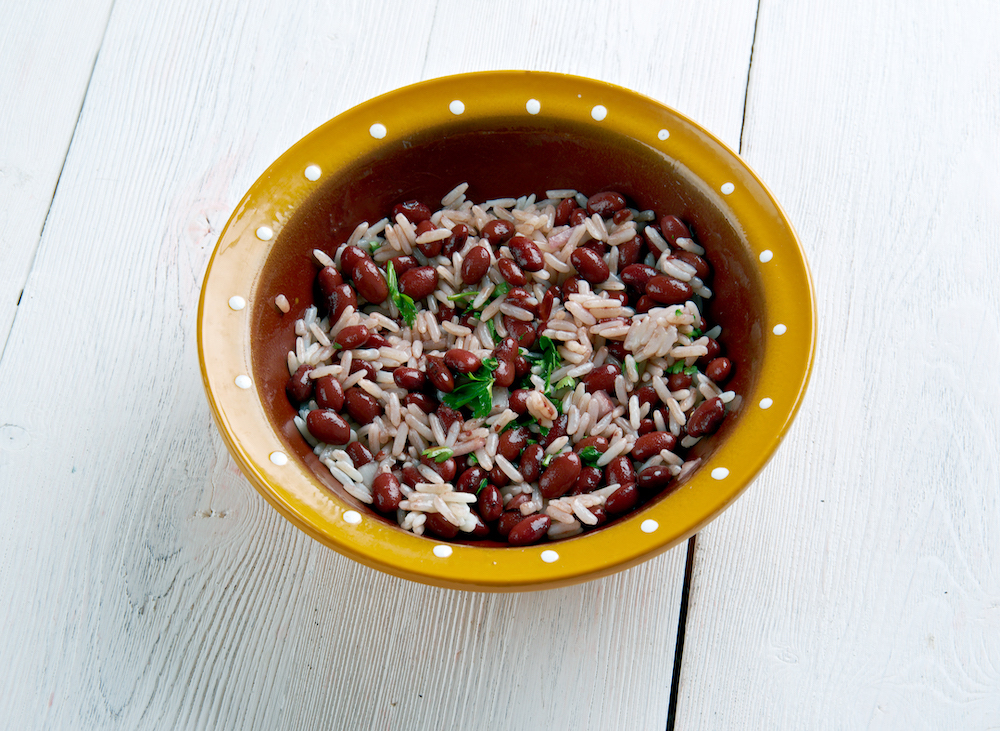
- arroz con frijoles – white rice is served with a separate bowl of beans, cooked into a delicious stew, to pour over it.
- Yuca con mojo – cassava drenched in an oil and garlic sauce.
- Maduros – sweet fried plantains.
- Green bananas (tostones) – mashed, boiled, or fried, which have a buttery, almost nutty taste.
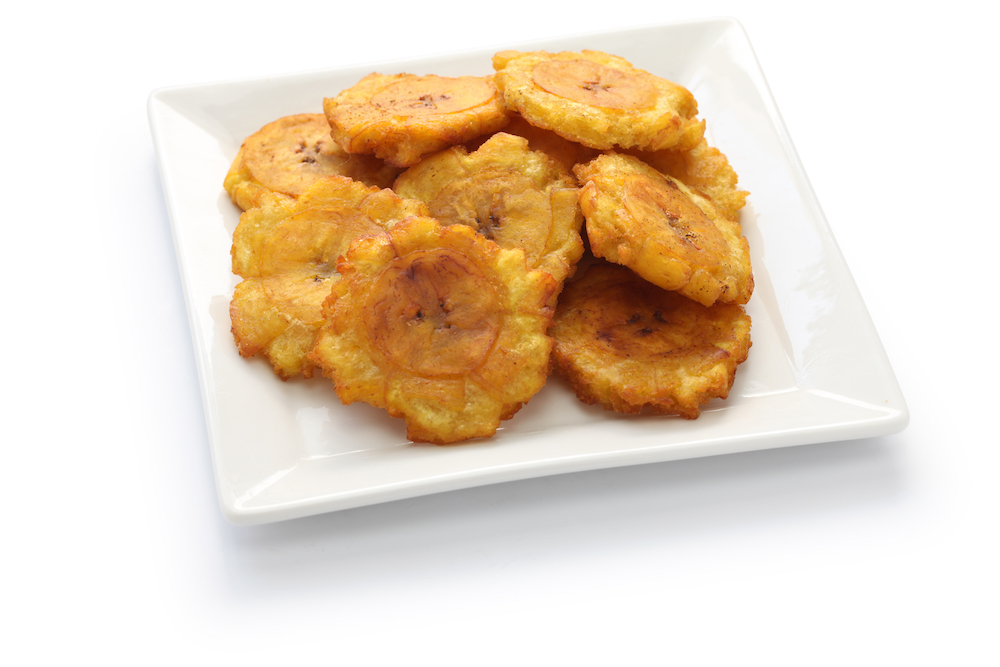
- Boniato – a type of sweet potato.
- Simple salad – tomatoes, cucumber, cabbage, and avocado.
Cuban cocktails
You will undoubtedly see the four classic Cuban cocktails listed here on menus throughout the island. I highly recommend trying all of them to know what you like the best!
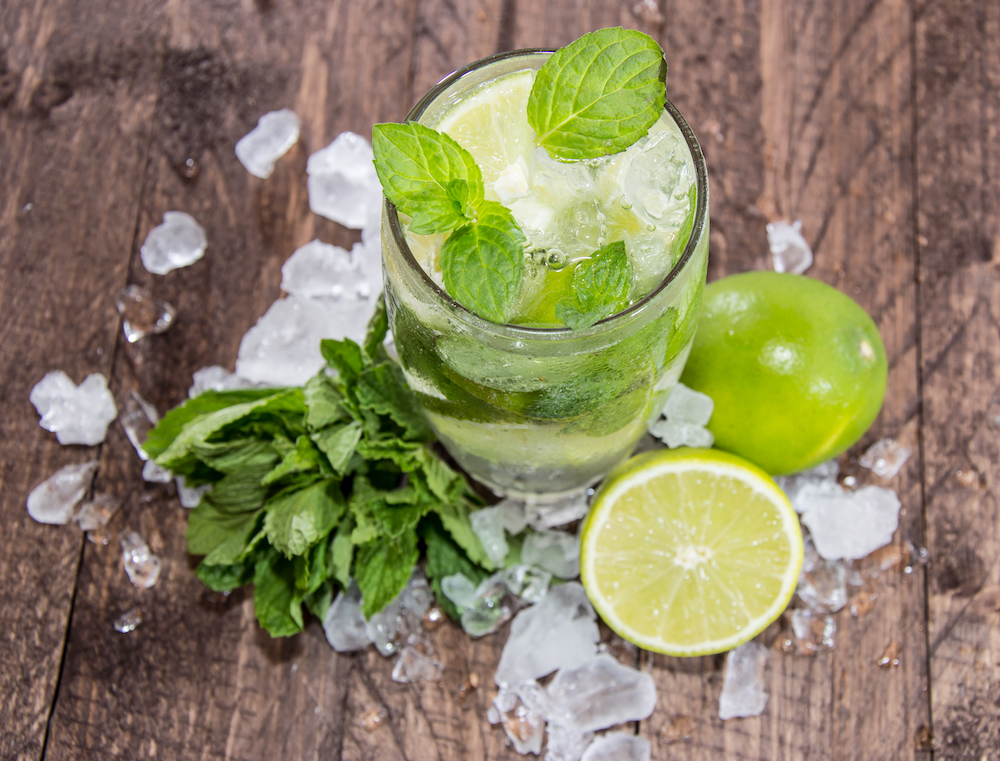
- Mojito is the most famous Cuban cocktail with white rum, sugar, lime juice, soda water, and fresh mint.
- Cuba Libre is a simple cocktail made with white rum, cola, and a twist of lime. The second most popular cocktail after the mojito.
- Daiquiri is made with white rum, Maraschino liqueur, sugar syrup, lime juice, and crushed ice. Ernest Hemingway’s favorite drink to enjoy while at the famous bar La Floridita in Old Havana.
- Piña Coladas did not originate in Cuba, but you can find them all over the island. The blend of pineapple juice and coconut milk makes for a perfectly refreshing treat on a hot summer day which is every day in Cuba!
Cultural Traditions
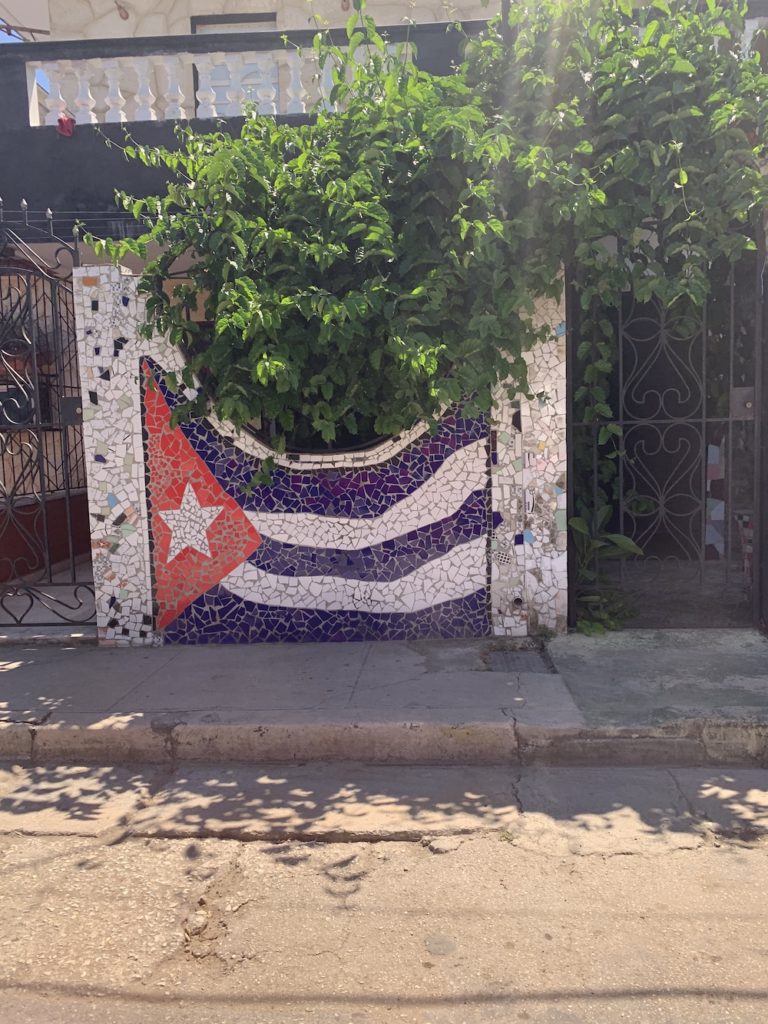
Cuba’s vibrant culture is evident from the moment you touch down on the island. There are certain Cuban traditions to familiarize yourself with before you go.
That way, you won’t be stumped if you experience them firsthand. You’ll also have a better appreciation for the meaning behind these traditions.
Christmas traditions
Cubans celebrate Noche Buena or Christmas Eve. Families and friends get together, roast a whole suckling pig, which is also served on New Years’ eve, and party the night away. Life and prosperity mean a lot to the Cuban people, and no gift can necessarily provide that, which I totally dig!
New Year’s Eve Cuban tradition
Experiencing New Year’s Eve in Cuba was such a magical experience. I witnessed my casa host and neighbors preparing for the highly anticipated dinner days leading to New Year.
Preparation for the New Year’s feast starts at the beginning of December as shopping last minute for ingredients isn’t ideal.
A variety of reggaeton, salsa, and bolero is heard on every block. Traditional New Year’s Eve dinner consists of pork leg, congri rice (mixed rice and beans), yuca (cassava) with mojo (sauce), tostones (smashed, fried green plantains), salad, and a homemade dessert called a buñuelo. Buñuelo is essentially fried dough.
Family and friends gather together in their best attire to socialize and celebrate, laugh, dance, and let loose!
After dinner, dancing begins until midnight. At midnight, fireworks can be seen along the Malecón in Havana, and people head outside to continue the celebration.
New Year’s Eve superstitions
Here are some typical Cuban New Year’s Eve superstitions:
Burning a doll: Before setting off fireworks and celebrating the good fortune the new year will bring, in some rural regions especially, Cubans burn an effigy. The human-shaped doll symbolizes releasing anything negative that happened in the past year and bringing good luck into the following year.
As we walked down the street admiring the joyous celebrations and wishing everyone a happy and prosperous new year, we noticed a family setting a doll on fire. In typical Cuban fashion, the family warmly invited us to join them to partake in their New Year’s Eve tradition.
Initially, I was alarmed at the burning of the doll, but once I learned the meaning, I was grateful to have participated in a unique and memorable experience!
Washing away the bad: On New Year’s Eve, Cubans meticulously clean their homes and keep the water until midnight. At midnight, the dirty water is thrown into the streets, symbolizing washing away anything negative that happened that year, hoping to start the new year with good, clean energy.
Notes into the sea: Some Cubans spend New Year’s Eve on the Malecón and throw handwritten notes into the ocean. The messages usually include wishes and desires that will be fulfilled in the new year.
Walking with a suitcase: Along with the burning of the effigy, I witnessed Cubans walking around the streets at midnight with a suitcase. I learned from my host that superstition is tied to Cubans’ desire to travel internationally within the following year.
Among the many things I appreciate about Cuba, and its culture, in particular, is despite uncertainties, many Cubans are grateful for what they have, their loved ones, and the opportunity to celebrate holidays together.
The cultural superstitions focus on the creative ways Cubans choose to spend the last day of the year—their desire for a more pleasant life and more opportunities is apparent, especially during New Year’s Eve.
On New Year’s Day, we were greeted by people on the street saying Felicidades! (congratulations) and wishing each other a happy, healthy new year. That’s what life is about.
Top attractions to see in Cuba:
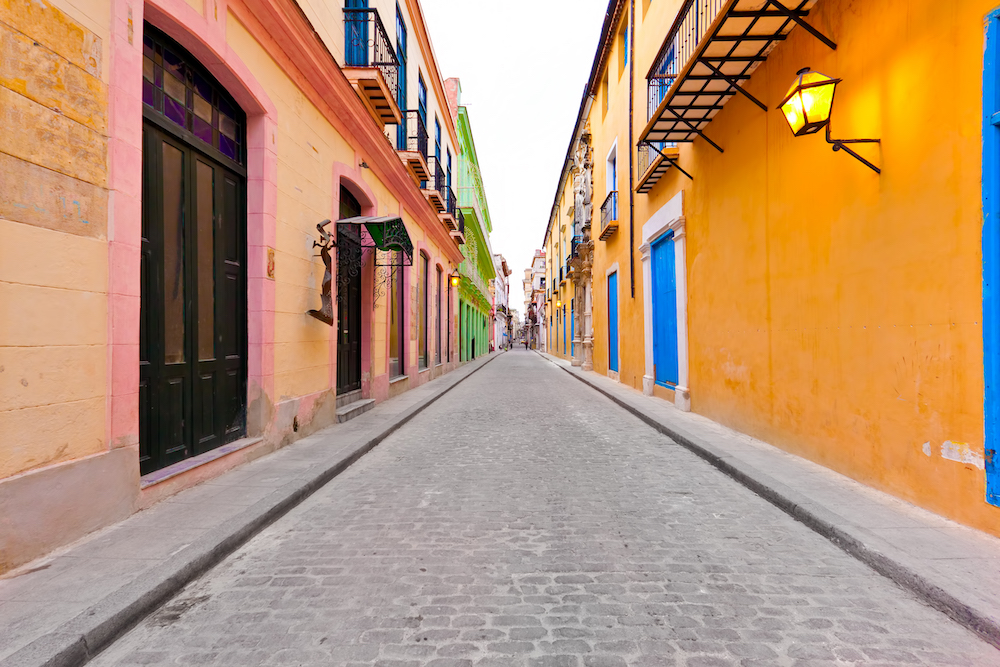
Old Havana – You can easily spend most of your time wandering the streets of Habana Vieja (Old Havana). This vibrant part of the city is full of personality with a mix of interesting architecture, colorful buildings, museums, live musical performances, churches, and plazas.
El Malecón – The Malecón is ideal for seeing fishermen, couples sitting together, families, and friends enjoying themselves with food and music. This was my favorite place to catch the most exquisite sunsets. Oh, and one more thing, the waves tend to come crashing over the wall onto the sidewalk and street, so be careful!
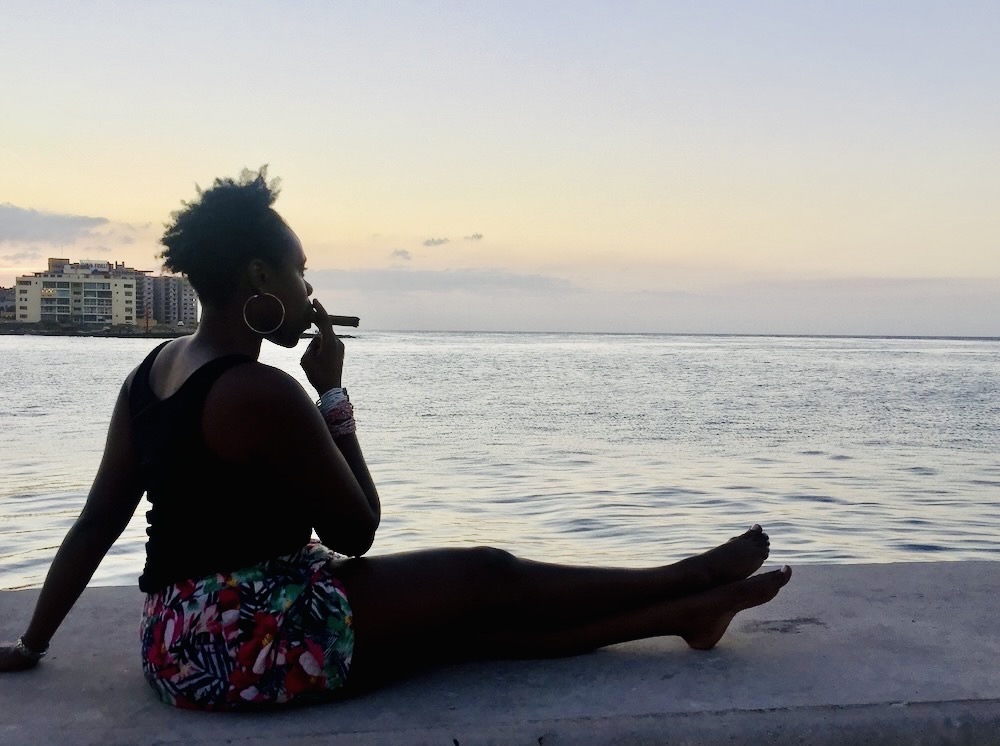
Viñales – Located in the Pinar del Rio province, about 2.5 hours outside Havana, it is known for its striking karst lush green landscape surrounded by mountains. Viñales offers spectacular views and lots of great outdoor activities such as horseback riding, zip-lining, and, my favorite, lessons on rolling a Cuban cigar.
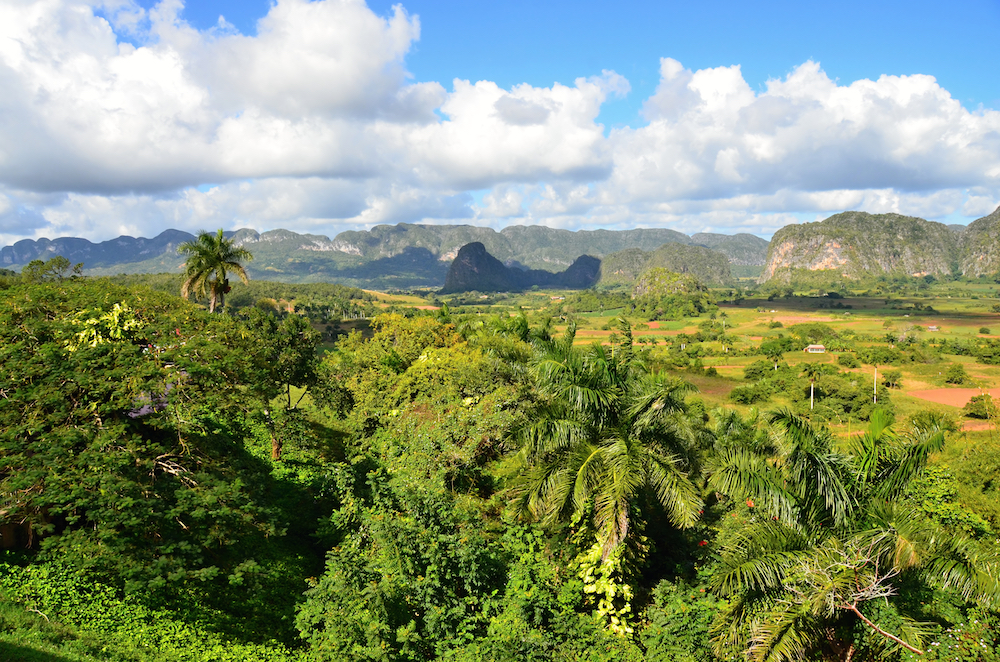
Trinidad de Cuba – This popular tourist destination is a world heritage UNESCO site and a beautifully preserved colonial town in central Cuba. Trinidad has pristine cobblestone streets, inviting sherbert-colored homes and picturesque hills and valleys for days. At night the charming town comes alive with the sounds of salsa music that can be heard from La Casa de Musica (The house of music).
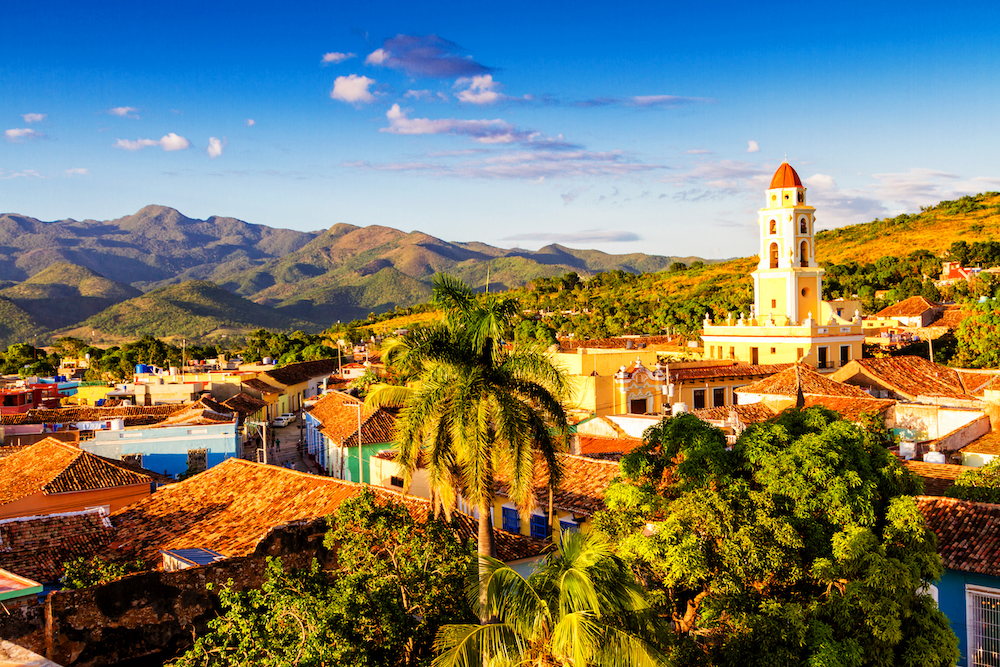
Santiago de Cuba – Is the second-largest city in Cuba and home to the most significant number of Afro-Cubans. The city is known for its culture and traditional dances, most notably son, derived from salsa. If you’re in Santiago de Cuba in July, be sure to check out the oldest and most authentic street carnival.
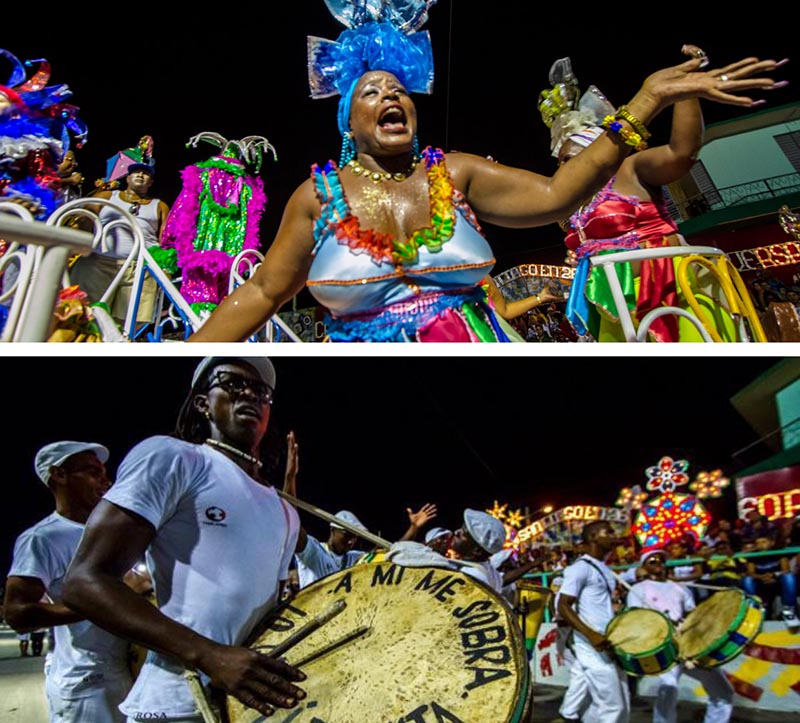
Varadero – Is referred to as Playa Azul (Blue Beach) or the South Beach of Cuba, located in the Matanzas region, 2-hours east of Havana. Spend a night or two soaking up the sun on some of the most spectacular beaches in the Caribbean. Varadero doesn’t disappoint!
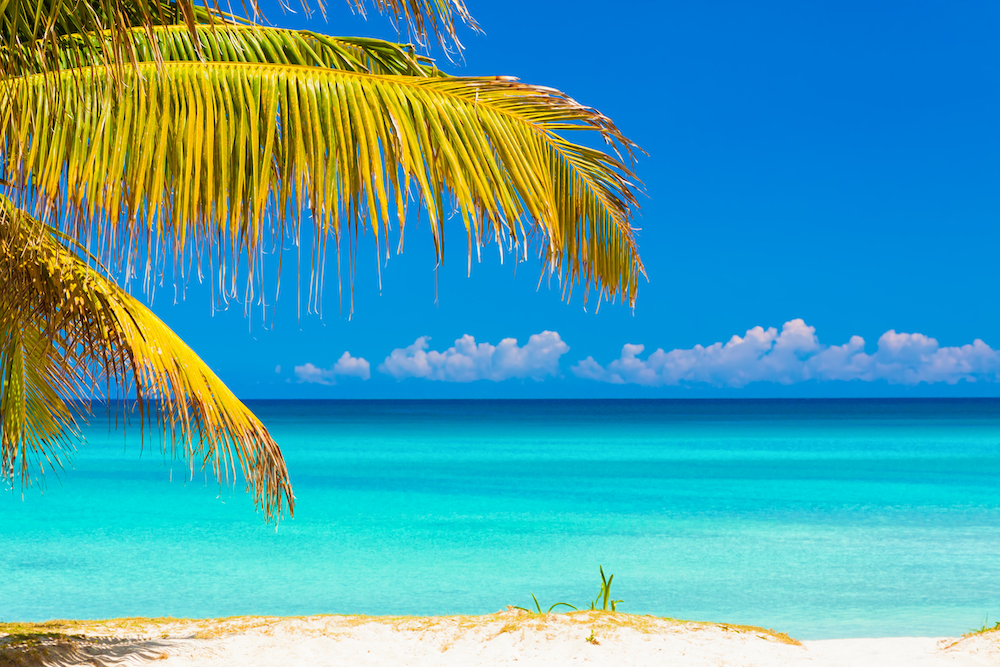
Conclusion – Lady Chin’s Two Cents
Looking back as a first-time traveler to Cuba, I realized I made my fair share of mistakes. Here are a few things I would do differently:
- Have a loose itinerary – Not every minute of the day needs to be planned out! Focus on remaining present!
- Expect some delays – Having a go-with-the-flow attitude will make your trip much more enjoyable.
- Drink plenty of water – The rum flows heavily in Cuba, and the sun is no joke! Make sure to stay hydrated!
- Bring plenty of cash – Cuba was more expensive than other Caribbean islands, so I recommend bringing at least $200-$300 extra than you budgeted, just in case. You’d rather be safe than sorry!
Cuba is unlike any place you’ll ever visit. Planning will save you a lot of time and unnecessary headaches. The country’s vibrant culture has something for everyone and is worth visiting at least once.
Have you visited Cuba? What are some of your tips for visiting Cuba for first-time travelers?
Recent Posts
Liked this post? Pin it and save it for later!
